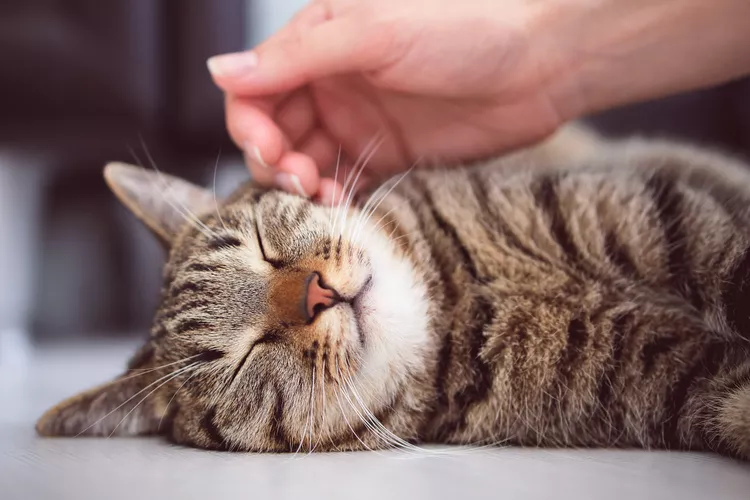Why Cats Like Being Pet

Many cats enjoy the feeling of being pet by people, a fact that pleases cat lovers everywhere. It is well known that petting cats can reduce stress and even lower blood pressure in humans, and it may also reduce stress in some cats. Of course, some cats dislike petting and will hiss, growl, swat, or bite when someone tries to pet them. There are several reasons cats can be so opinionated about petting.
Why Cats Like To Be Pet
Most cats are relatively social animals that communicate with other cats by nuzzling, rubbing, and grooming one another. These actions send pheromones to other cats that help them identify each other and communicate. Cats prefer to communicate with humans on their own terms. They know we are not cats, but they sometimes communicate with us as if we were.
Many cats' love of physical touch comes from kittenhood. Mother cats lick and groom their kittens to nurture them and keep them clean. The love hormone oxytocin surges in the mother and kittens during these actions, making the experience pleasant and comforting. Petting from humans mimics the sensation of being groomed and can provide the same pleasurable experience.
Bunting (nuzzling and rubbing on you) is one way cats show love to you. Petting is a way to return that love. Cats also enjoy petting because it feels really good to them. However, some cats prefer to be pet very little or at all.
Why Cats Don't Like Petting
Some cats resist handling of any kind, including petting. This may simply be a personal preference for some cats. In other cases, it may mean the cat was orphaned at a young age or was not socialized with other cats or humans. Feral cats avoid human interaction entirely because they were raised in cat colonies that involve little to no interaction with humans. They learn to fear and avoid humans. Some feral cats can become domesticated enough to live with humans, but they may never accept petting.
Some cats may seem fickle. One second, they act like they are enjoying petting, and the next second they are hissing, growling, swatting, or snapping. One possible reason is that the cat may not like the specific area being pet. Often, it means the cat has reached a threshold for petting. Experts call this overstimulation aggression or petting-induced aggression.
How to Pet a Cat
There are right and wrong ways to pet a cat, but it ultimately depends on the needs and wants of the specific cat. Many cats tolerate or enjoy petting from trusted people but resist petting from strangers. This is because it requires a certain level of trust for a cat to feel safe in a vulnerable position.
Allow the cat to sniff you and watch you before you attempt to pet them. Sitting down is a good way to show you are not a threat. Keep your hands relaxed near the cat's level, but don't reach out too close to the cat. The cat may rub or nuzzle your hand, a sign that they may tolerate gentle petting.
Where to Pet Cats
All cats are different, but there are a few general guidelines when it comes to petting locations. Cats seem most comfortable with gentle pets on the sides of the face. They may even push against you in response if they are enjoying the attention. You can slowly move your head along the sides of the neck and shoulders. Many cats will move to guide you to where they want to be pet. If the cat knows you and trusts you, they may enjoy being petted along their back and along the tail.
Cats are typically less tolerant to strangers petting them along the back, so avoid this if you are not closely bonded with the cat. While petting cats, watch for communication signals and body language. Stop petting the cat if they become tense or arch their back away from you. When in doubt, stop what you are doing and let the cat make the next move.